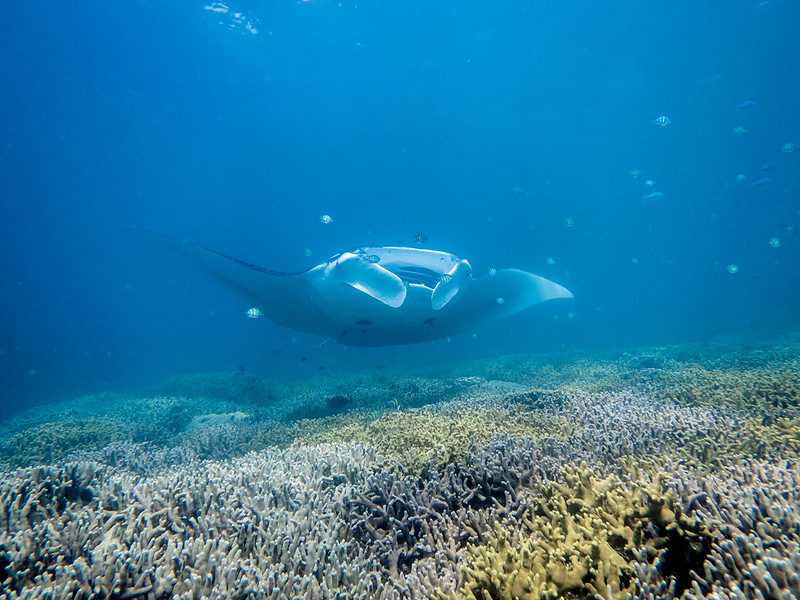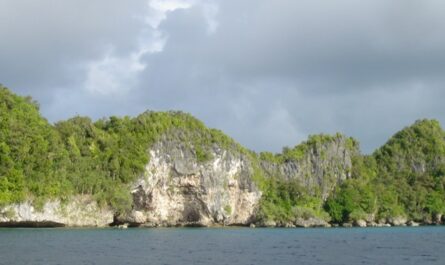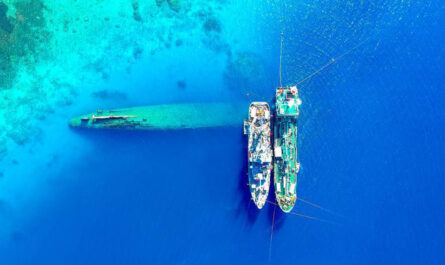Located in the western Pacific Ocean, Yap is a destination of unparalleled beauty and cultural richness. Known globally as the “Manta Capital of the World,” this remote island cluster offers an extraordinary opportunity to dive alongside manta rays, one of the ocean’s most graceful and majestic creatures.
This guide explores the unique allure of Yap, delving into the biology of manta rays, the best dive sites, cultural significance, and how visitors can contribute to conservation efforts while enjoying a once-in-a-lifetime adventure.
1. Yap: A Jewel of Micronesia
An Overview of Yap
Yap is an island group in the Federated States of Micronesia. It consists of four main islands surrounded by smaller islets, each boasting diverse marine ecosystems. Yap’s unique geography includes expansive lagoons, intricate reef systems, and channels that support a wide array of marine species.
Why Yap is Special for Manta Rays
What sets Yap apart from other diving destinations is its abundance of manta rays year-round. The nutrient-rich waters, combined with cleaning stations where fish remove parasites from the mantas, create a sanctuary that is both a feeding ground and a safe haven for these gentle giants.
2. The Fascinating World of Manta Rays
Biology and Behavior
Manta rays are part of the Mobula genus and are among the largest rays in the world. Two species are commonly seen in Yap:
- Reef Manta Rays (Mobula alfredi): Often found in shallow waters near cleaning stations.
- Oceanic Manta Rays (Mobula birostris): Larger and more elusive, these rays inhabit deeper waters.
With wingspans that can exceed 7 meters and weights surpassing 1,000 kilograms, manta rays are awe-inspiring creatures. They are filter feeders, gliding gracefully through the ocean as they consume plankton.
Intelligence and Social Interaction
Manta rays are highly intelligent, exhibiting behaviors that suggest curiosity and memory retention. They frequently approach divers, displaying a gentle and inquisitive nature.
3. Top Dive Sites in Yap
1. M’il Channel
M’il Channel is the most famous dive site in Yap, celebrated for its cleaning stations where manta rays gather year-round. Divers can observe these creatures hovering as cleaner fish attend to them.
- Depth: 10-25 meters
- Highlight: Guaranteed manta ray sightings during the mating season (November to May).
2. Goofnuw Channel
Known for its plankton-rich waters, Goofnuw Channel offers unparalleled opportunities to see manta rays feeding.
- Depth: 5-20 meters
- Highlight: Witnessing barrel rolls as mantas feed.
3. Vertigo Wall
This dramatic drop-off is perfect for spotting larger oceanic species, including manta rays, reef sharks, and schools of fish.
- Depth: 10-40 meters
- Highlight: A thrilling dive experience with diverse marine life.
4. Yap Caverns
While not exclusively a manta ray site, Yap Caverns features stunning coral formations and occasional manta sightings.
- Depth: 15-30 meters
- Highlight: A mix of caverns, coral gardens, and marine life diversity.
4. Seasonal Highlights
Yap offers year-round manta ray encounters, but specific seasons enhance the experience:
- Mating Season (November-May): Large groups of manta rays gather, creating spectacular displays.
- Plankton Blooms (December-March): Feeding frenzies provide unforgettable diving moments.
- Dry Season (November-April): Calm seas and clear visibility make diving more enjoyable.
5. Cultural Significance of Manta Rays
Traditional Beliefs
Manta rays hold an esteemed place in Yapese culture. They are often seen as symbols of strength and grace. Local legends describe manta rays as guardians of the sea, guiding sailors and protecting them from harm.
Integration in Art and Storytelling
The image of the manta ray frequently appears in traditional carvings, tattoos, and oral histories, reflecting the deep respect the community has for these creatures.
6. Conservation and Responsible Diving
Diving with manta rays comes with the responsibility to protect their habitat. Yap has implemented several conservation measures to preserve its marine environment.
Guidelines for Divers
- Maintain a safe distance from manta rays.
- Avoid touching or chasing the animals.
- Use reef-safe sunscreen to protect coral reefs.
Marine Protected Areas
Yap has established zones where fishing and other activities are restricted, allowing marine ecosystems to recover and thrive.
7. Underwater Photography Tips
Capturing the majesty of manta rays requires skill and patience. Yap’s clear waters and frequent manta encounters make it an ideal location for photography.
Equipment Recommendations
- Use a wide-angle lens to capture the full wingspan of manta rays.
- A strobe light can enhance colors and reduce shadows in deeper waters.
Best Practices
- Stay still and let the manta rays approach naturally.
- Avoid sudden movements that might startle marine life.
8. Exploring Beyond Diving
While diving is Yap’s main attraction, the island offers other unique experiences.
Stone Money
Yap is renowned for its traditional stone money, massive limestone disks that serve as a symbol of wealth and heritage.
Traditional Dances
Yapese dances are a vibrant expression of cultural identity, often performed during festivals and community celebrations.
Nature Walks and Kayaking
Explore Yap’s lush mangroves, beaches, and hiking trails, where you can experience the island’s natural beauty on land.
9. Challenges and Conservation Efforts
Yap faces environmental challenges such as coral bleaching and the impacts of climate change. Conservation efforts led by the local community are crucial in addressing these issues.
Local Engagement
Community-based programs educate residents and visitors about sustainable practices, blending traditional knowledge with modern conservation strategies.
Research and Collaboration
Partnerships with international organizations help monitor manta ray populations and protect their habitats.
10. A Once-in-a-Lifetime Experience
Diving with manta rays in Yap is more than just a recreational activity—it’s an opportunity to connect with one of nature’s most extraordinary creatures. From their graceful movements to their inquisitive interactions with divers, manta rays leave a lasting impression on all who encounter them.
Conclusion: Preserving a Legacy
Yap’s dedication to protecting its marine environment ensures that future generations will have the chance to experience the magic of manta ray diving. By visiting Yap and practicing responsible tourism, divers contribute to the preservation of this unique ecosystem, supporting both the environment and the local community.
For those seeking adventure, culture, and a profound connection to nature, Yap offers an unforgettable journey into the heart of the Pacific.



